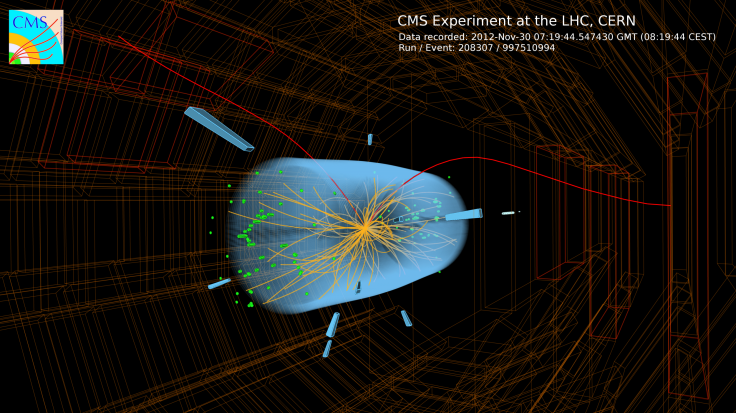CERN Results Prove Another Part Of Standard Model, How We Understand How The Universe Works

The European Center for Nuclear Research (CERN) presented new results from the Large Hadron Collider (LHCP) that confirmed a prediction of the Standard Model. The CERN results confirm another part of the Standard Model and bolster our understanding of how the universe works.
On Friday, CERN presented results of an LHC experiment that observed the decay of Bs (pronounced "B sub S") particles into muon particles, a fundamental particle that is not made up of other particles. The Standard Model is the umbrella theory explaining how fundamental particles, or subatomic particles, function. According to CERN, the Standard Model explains how these particles behave based on electromagnetic, weak and strong forces. “Our best understanding of how these particles and three of the forces are related to each other is encapsulated in the Standard Model of particle physics,” states CERN.
In the new LHC experiment, CERN observed the decay of Bs into two muon particles exactly as the Standard Model predicted. Teams working on the Compact Muon Solenoid (CMSP) experiment, and the Large Hadron Collider beauty (LCHb) experiment collaborated on the project.
According to CERN, for every billion particles, only a few Bs particles decay into two muon particles, and the results match the very precise prediction of the Standard Model. The theory predicts that three out of every billion Bs particles to decay into a pair of muon particles, which alligned with the results from the CERN experiment.
Spokesman Pierluigi Campana praised the Standard Model and the LHC for confirming another part of the theory. Because of the extremely sensitive nature of the process, it took physicists 25 years to confirm the prediction. “It’s precisely for measurements like this that LHCb was built. This result shows that we’re really putting the Standard Model to the most stringent test yet at LHC energies, and so far it’s coming through with flying colors,” said Campana in a statement.
For CERN, this is just another step in experiments attempting to confirm the Standard Model. While the theory is used to predict the known universe that only accounts for five percent of the actual universe, the other 95 percent of the universe is made up of dark matter and energy, which the Standard Model cannot explain.
Experiments are conducted to test predictions made by the Standard Model to ensure its accuracy and to determine where it could be wrong. The Standard Model includes the fourth fundamental force, gravity, in its prediction, as laid out by Albert Einstein’s general theory of relativity, but it does not explain it.
Because the Standard Model does not explain gravity, events from the beginning of the universe can't be explained, either. Other problems with the Standard Model crop up when discussing black holes or dark matter. CERN’s experiments using the LHC can help prove where the Standard Model is right, and wrong.
If an experiment proves a prediction wrong, physicists can explore new avenues within the Standard Model or try to explain the results using theoretical physics. If the Standard Model is accurate in one prediction, it can eliminate possible other theories of new physics, which makes it easier to sort out the various attempts to explain the universe.
CERN’s results were presented at 2013 Europhysics conference on High Energy Physics held in Stockholm, Sweden. CERN and LHC recently made news in 2012 by confirming the existence of the Higgs boson, also known as the God particle.
© Copyright IBTimes 2024. All rights reserved.








